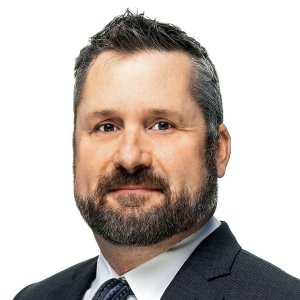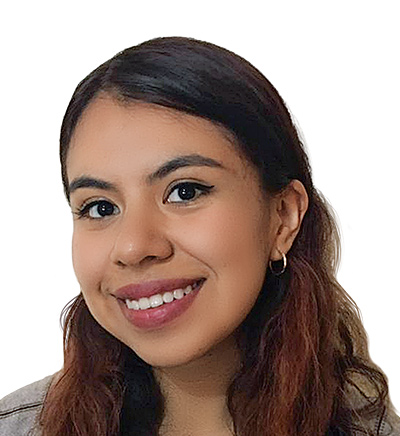New Estimation Tech for Metal Recovery is a Game Changer

Q: What is MineSense's offer in the mining market and what added value does the company provide its clients?
A: MineSense is a new company in the sector that offers a sensor technology using X-ray fluorescence, with which we can examine, in real time, the contents of the buckets at the mine face and determine the grade of payable metal in each bucket full.
Most mining companies are unable to determine the grade of recoverable metal until the material reaches the concentrator. By using our technology, companies can determine that grade at the mine face. We can tell mining companies from the very start what they are extracting with their shovels. In addition, the implementation of this technology increases profitability and sustainability, water and energy are saved, the number of tailings produced is reduced and, in some cases, the life of the mine can be extended.
Q: How does the company’s product work and where is it implemented?
A: Mining starts by taking a huge pile of rocks and having geologists examine them. By conducting tests, they can confirm the presence of minerals. Subsequently, companies build a facility around that area to drill holes and use explosives to provide smaller pieces of rock. Then, companies send shovels or excavators to scoop up the material in a bucket and they put each bucket load into a truck, which takes the material that was recovered to the concentrator or to the waste dump. With our product, we connect sensors to the bucket as it collects material. Our product scans the material and provides an excellent estimate of the metals content that is very close to assay outcomes.
Q: How does the scanning technology work?
A: We attach our scanners to the shovel’s bucket. The scanners are powered from the cab and connected through cables. We also have a wireless communication that connects to the company’s network that is configured so that scanners can send their results to computers to process the information and deliver estimates in real time. By the time the shovel filling process is complete, we can deliver to the operator a reading of the grade of metal present in the shovel bucket. This information can be integrated into a fleet management system (FMS) to determine whether the material should be sent to the concentrator or to the waste pile. In addition, the trucks can be diverted automatically through our integration with the mine’s FMS.
Q: How accurate is this technology?
A: We deliver around 95-98 percent accuracy compared to the assay results due to the calibrations that are carried out. We first start with a process called amenability testing, where companies send us a representative sample of the mine’s material to scan. At the same time, we send that sample to a laboratory for assay. Later, we compare both results and calibrate them.
Second, we go to the mine site and install one of our sensor units on a shovel and carry out similar calibration exercises with the mine. We do this until both MineSense and the company’s mining teams agree there is X grade material in each bucket. Soon after, we provide the company with real-time information of what is in each scoop. It is important to mention that if there is no diverter available at the scoop level, we average the grade for the trucks that get between three to seven scoops from a shovel.
Q: How can you guarantee a certain percentage of uptime?
A: Our goal is to achieve more than 90 percent uptime, which we have achieved. Mining is a harsh environment, so we place the sensors in the best part of the bucket to scan and deploy military grade steel around them to prevent damage to the sensors. When we have finished installing our system, the bucket is actually stronger than it was before the installation.
In addition, we offer multiple sensors per bucket for redundancy. If one of the sensors are damaged, our system will continue working. We also have a 24/7 monitoring center in Vancouver, British Columbia, that is always checking the system. If there is a problem, we are notified through the network so we can inform our customers immediately. We also keep spare parts on site for clients, so at the end of a shift they can replace the damaged part if they require.
Q: What are the minimum conditions that a mining operation must meet for your solution to be financially viable?
A: We do a value model for each site, but it really depends on performance. Most of the time, we can help mines that process more than 10,000 tons per day. The larger the mine, the greater the economic benefit.
In addition, if we can help a company extend its life of mine, they can earn even more profit because the fixed assets of the mine will already be fully depreciated, so that the only costs that will be incurred will be the variable cost of producing each additional pound or ton of payable metal; thus adding additional years to a mine’s life can bring substantial additional profit to the mining company.
Q: At what point during the mine’s life cycle is the ideal time to implement this solution?
A: We see ourselves as a company that can produce value at any point in the life cycle; however, we believe that the best value can be obtained at the very beginning. The way that mine planning works today is that geologists survey and conduct tests to create block models in their planning software. These blocks are usually 10x10x10 or 10x10x15, which are designated as either ore or waste. With our solution, we can examine each shovelful and advise our clients how much waste and how much ore are in each bucket. The more heterogeneous the ore body is, the more value we can provide throughout the mine’s life cycle.
Q: What are the main economic benefits of this solution?
A: We have multiple economic benefits for potential customers. We can extend the life of the mine, which results in significant additional profits. In addition, our two most common use cases are that we can identify ore that was initially identified as waste and can identify waste that was initially identified as ore.
One of our customers, Copper Mountain Mine in Canada, which has been using our technology for over two years, published its NI-43-101 technical report regarding its operations in 2020. The company reported that we helped them recover an additional 4 percent of ore from waste and eliminate 4 percent of the waste that they would have processed as ore.
In December, we assisted another customer that had integrated MineSense technology into its fleet management system to automate its truck diversions. We identified more than 100 truckloads of material that was designated as waste and diverted those trucks to the mill. The customer was able to process over US$400,000 of additional payable metal in five days, which would extrapolate to over US$29 million if we could duplicate that performance over a full year.
Q: What are the main objections you get from clients after your calculation has shown a positive impact?
A:This is a relatively new technology and, therefore, sometimes it is not part of the companies' long-term plans. The problem is that companies have difficulty finding the resources to implement this technology, which takes time However, we are confident that if companies give us the opportunity to work with them, they will find a great return on their investment. We always try to deliver the greatest return in two years or less and sometimes, depending on the size of the mine and its production, the payback period can be three to four months.
Q: How has the solution been introduced to the Mexican mining sector?
A: We have just started talking to mining companies in Mexico and have received a positive response thus far. In any business, there are only two reasons why a company would make a decision: to increase their revenue or to lower their costs. We believe we have an attractive offer for the Mexican market because we can achieve both sides of that equation: increase the payable metal and decrease its costs by not processing waste material.
We are attending virtual conferences to improve awareness of our product in the Mexican mining sector. We are also increasing our presence in social media, especially in Spanish, because we know that clients feel more comfortable working in their native language. We have had success in South America and we know that the Mexican market is similar to what other mining countries such as Chile and Peru are doing. Although the conditions are completely different, our solutions can also fit perfectly in Mexico.
Prior to 2020, we were a startup company looking for key locations and partners to introduce our product. However, in the past year we became a fully commercial company that has had several successes and we are confident that we can bring great benefits to many of the base metal mining companies in Canada, the US and especially Mexico.
MineSense Technologies is a technology development and marketing company that promotes sustainability in mining by improving the ore recovery process. MineSense provides a proven platform for the detection and classification of low-grade minerals at a higher level of sensitivity.



 By Paloma Duran | Journalist and Industry Analyst -
Wed, 04/07/2021 - 11:21
By Paloma Duran | Journalist and Industry Analyst -
Wed, 04/07/2021 - 11:21















